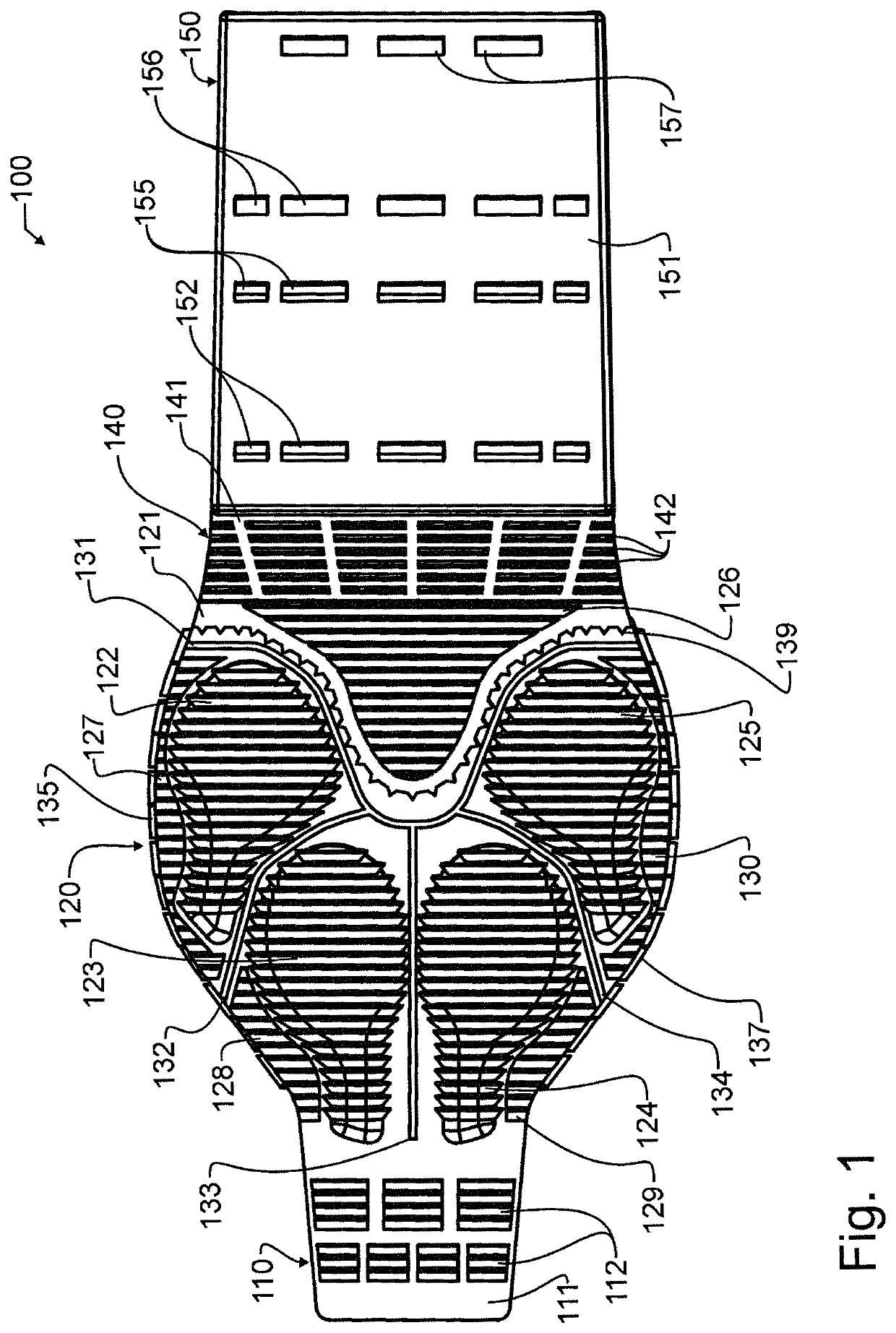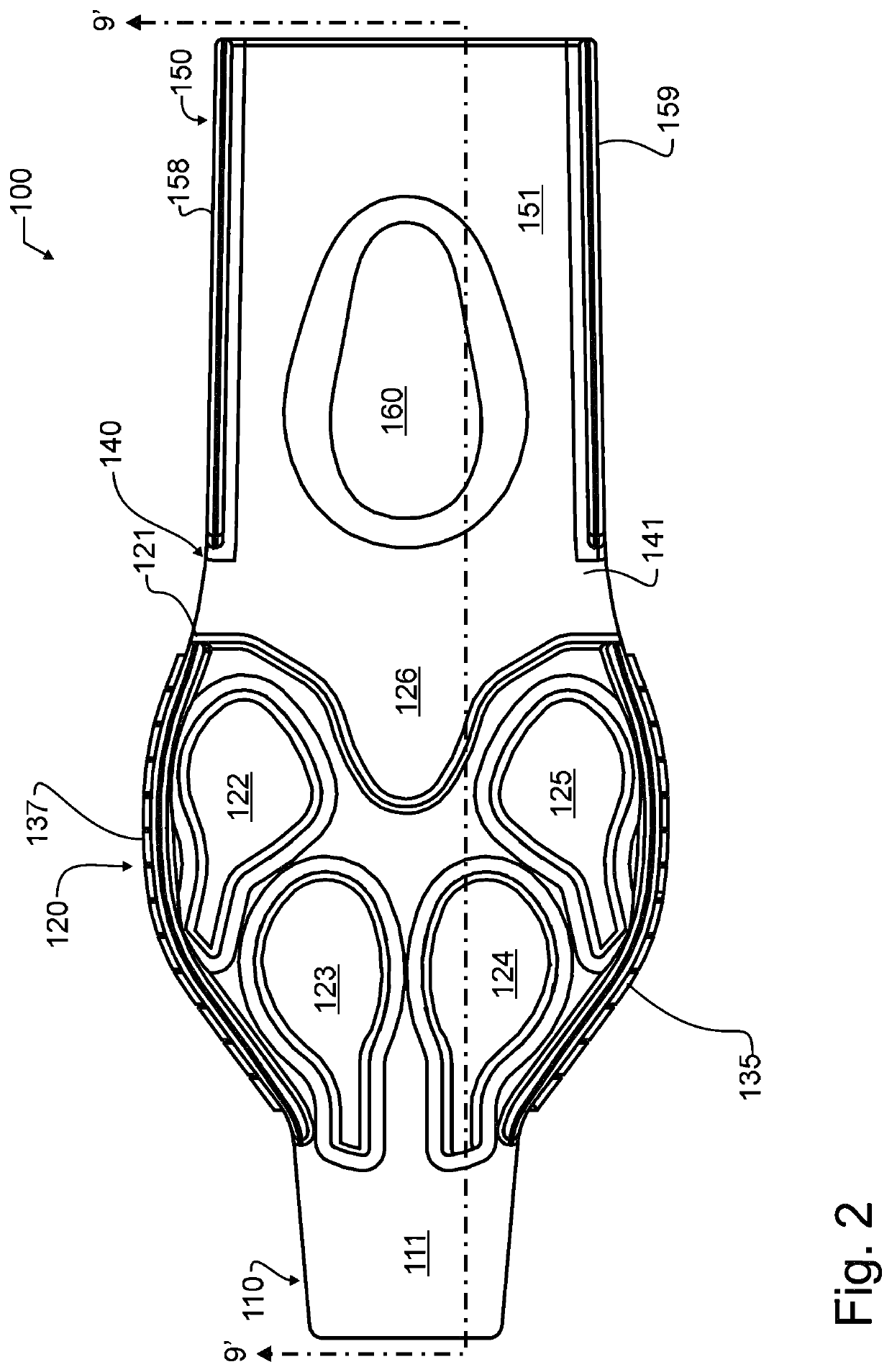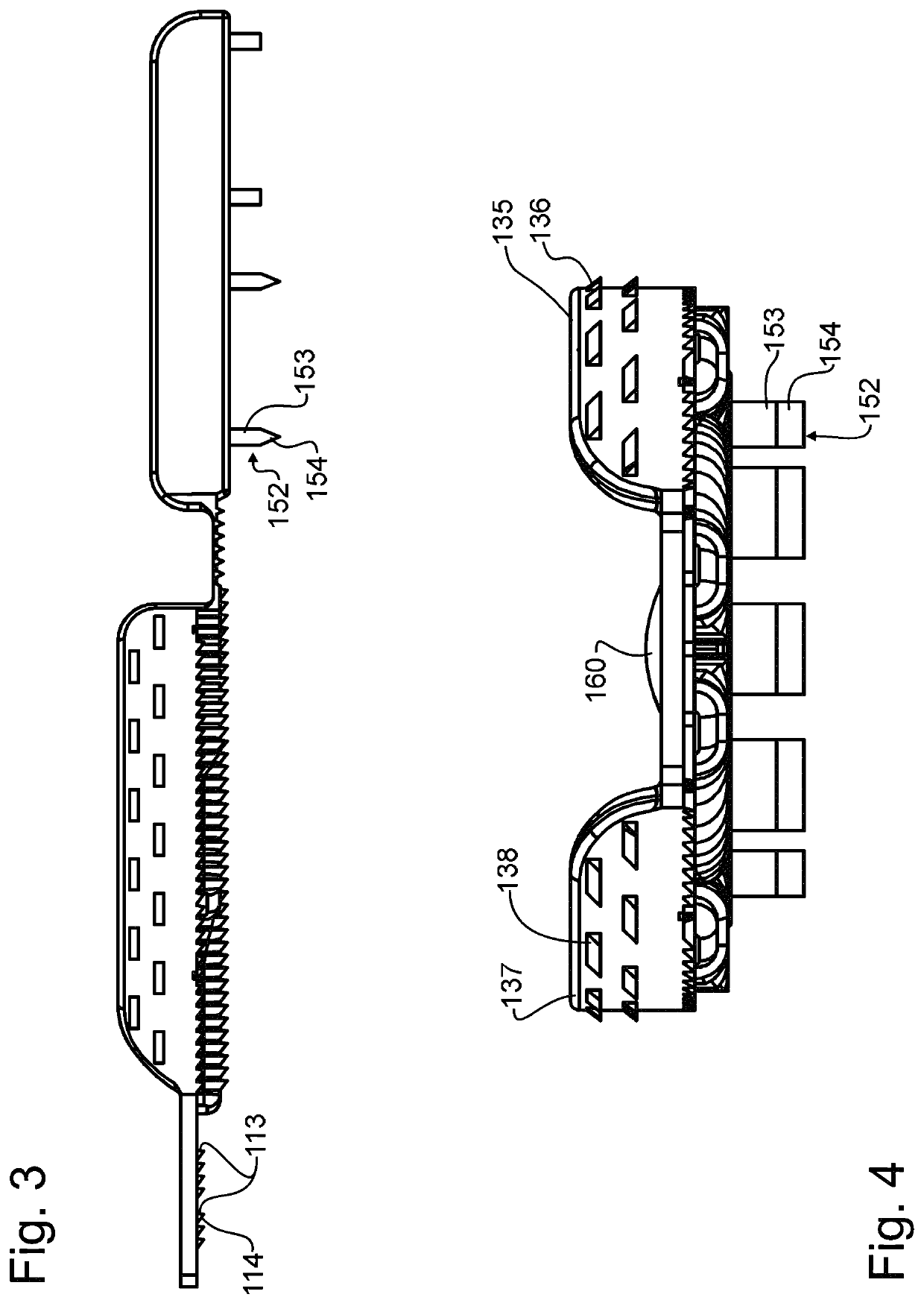Trail boot with molded liner and adjustable metatarsal and metacarpal pad
a technology of metatarsal and metacarpal pads and molded lines, which is applied in the field of protective dog boots, can solve the problems of insufficient traction of dog paws on a variety of hard surfaces, inconvenient placement of dog paws, and inability to have the usual toughness, so as to reduce the risk of circulatory disruption or harm to the dog, and be easily placed around the dog's paws. , the effect of reducing the risk of injury
- Summary
- Abstract
- Description
- Claims
- Application Information
AI Technical Summary
Benefits of technology
Problems solved by technology
Method used
Image
Examples
Embodiment Construction
[0061]Manifested in the preferred and alternative embodiments, the present invention provides a molded sole 100 such as illustrated in FIGS. 1-6. Preferred embodiment molded sole 100 comprises a toe 110, a mid-base 120, and a tail 150 that all optionally but preferably may be formed or molded simultaneously. While preferred embodiment molded sole 100 is quite complex and has many features integrated therein, as will become apparent herein below, this complexity may be incorporated into a single mold that can be used to form many molded soles. This enables the manufacture of a boot having preferred embodiment molded sole 100 using common manufacturing techniques, thereby keeping the fabrication cost of each individual boot reasonably low. Nevertheless, other fabrication techniques may also be used in alternative embodiments, and so the present invention is not solely limited to the technique of molding.
[0062]While not essential, in preferred embodiment molded sole 100 a toe 110 is pr...
PUM
 Login to View More
Login to View More Abstract
Description
Claims
Application Information
 Login to View More
Login to View More - R&D
- Intellectual Property
- Life Sciences
- Materials
- Tech Scout
- Unparalleled Data Quality
- Higher Quality Content
- 60% Fewer Hallucinations
Browse by: Latest US Patents, China's latest patents, Technical Efficacy Thesaurus, Application Domain, Technology Topic, Popular Technical Reports.
© 2025 PatSnap. All rights reserved.Legal|Privacy policy|Modern Slavery Act Transparency Statement|Sitemap|About US| Contact US: help@patsnap.com



